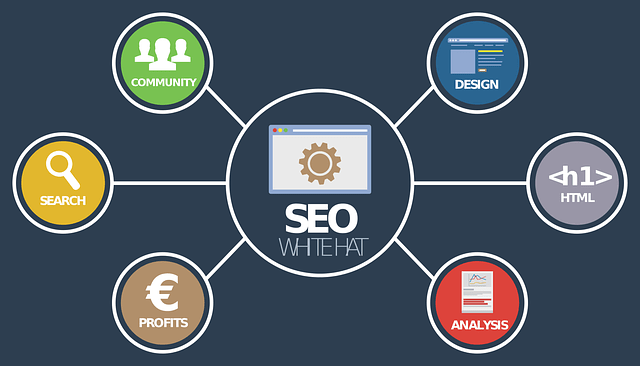Introduction
Hello everyone, today in this blog we discuss SEO.
SEO stands for “Search engine optimization”. Search engine optimization is made up of two words. First search engine and second optimization.
What is a Search Engine?
The Search engine is software that created to search and find for information from the internet. Because everybody knows that millions of website and billions of TB data stored in the internet. So a software system was created to search that data, which we call a search engine
What is optimization?
Optimization means using something perfectly to use, The action of making the best or most effective use of resources.
So SEO process is that we do the best optimization of search engines to our advantage and get the best results. It is the process of optimizing your website or web pages better for search engines so that when someone searches for your product or website it can rank higher on search.

Technique of SEO
White Hat SEO
White Hat SEO also called ethical SEO and organic SEO
White Hat SEO includes optimizing your website following the guideline and restrictions imposed by search engine
Some examples of white Hat SEO include keyword research, the right use of keywords, backlinks, quality content, and content optimization.

Here are some common white hat SEO techniques:
- Quality Content Creation: Develop informative, engaging, and relevant content that satisfies user intent.
Focus on providing value and solving user problems. - Keyword Research and Optimization: Conduct thorough keyword research to identify relevant and targeted keywords.
Optimize your content and meta tags to include these keywords naturally and provide context to search engines. - On-Page Optimization: Ensure proper optimization of meta tags, headings, URLs, and image alt tags.
Structure your content in a user-friendly manner and make it easily readable. - Link Building: Earn backlinks from authoritative and relevant websites through content promotion, guest blogging, and building relationships with industry influencers.
Focus on acquiring natural and high-quality backlinks. - Technical Optimization: Optimize your website’s technical aspects, such as page load speed, mobile-friendliness, crawlability, and site structure.
Make sure search engines can easily access and understand your content. - User Experience: Create a positive user experience with easy navigation, clear calls-to-action, fast page loading times, and mobile optimization.

Black Hat SEO
Black Hat SEO is also called unethical SEO. Black Hat SEO includes unethical techniques that disapprove or are against search engine guidelines.
Some examples of black Hat SEO are keyword stuffing, page swapping, the use of invisible text, doorway pages, and duplicate content.
Here are some examples:
- Keyword Stuffing: Overloading content and meta tags with excessive and irrelevant keywords in an unnatural manner.
- Hidden Text and Links: Hiding text or links from users but making them visible to search engines to manipulate rankings.
- Cloaking: Presenting different content to search engine crawlers than what is shown to users, aiming to deceive search engines.
- Link Manipulation: Engaging in link schemes, buying or selling links, or participating in link farms to artificially inflate backlink profiles.
- Content Scraping: Copying content from other websites without permission or attribution.
- Automated Content Generation: Using software to generate low-quality, automated content that lacks value and originality.
NOTE:-Black Hat SEO tactics may offer short-term gains, but they come with significant risks and can harm your website’s long-term visibility and reputation.
Types of SEO
On-Page SEO
On-page SEO refers to optimizing part of the web pages you control like, Title of pages, content, etc… so they rank higher on search engines and get more search engine traffic. On-page SEO covers internal part of your web pages
Example of On-page SEO
Keyword reach content
Headers
URL optimization
Images
Page speed
Site content
Internal Linking
Title tag
- Title Tags and Meta Descriptions: Write compelling and keyword-rich title tags (the HTML title element) that accurately describe the content of each page.
Craft enticing meta descriptions to entice users to click on your search result. - URL Structure: Create clean and descriptive URLs that include relevant keywords and provide a clear indication of the page’s content.
- Header Tags: Use proper heading tags (H1, H2, H3, etc.) to structure your content and highlight important sections.
Incorporate relevant keywords in your headings to provide clarity and context. - Internal Linking: Link related pages within your website to improve navigation, distribute link equity, and enhance the user experience.
Internal links help search engines understand the hierarchy and relevance of your website’s pages.
Off-Page SEO
Off-page SEO covers anything you change outside of your webpage in an attempt to rank your website. Pages SEO focus on outside of your website like brand mention, backlink, etc..
Example of off-page SEO
Brand mention
Social media
Backlinks
Local SEO
Guest posting
Content marketing
Link building
- Link Building: Earn high-quality and relevant backlinks from authoritative websites.
- Online Reputation Management: Monitor and manage your online reputation by actively engaging with your audience, responding to reviews and comments, and addressing any negative sentiment.
A positive online reputation can indirectly impact your SEO efforts. - Brand Mentions: Encourage mentions of your brand or website in online publications, blogs, and social media.
Even without a backlink, brand mentions can contribute to your website’s visibility and authority.
Technical SEO
Technical SEO is most important for better indexing and better cowling in search engines. In simple terms, technical SEO is the optimization of your website from a technical perspective to improve its visibility and performance in search engine rankings.
It involves making sure your website is structured and designed in a way that search engines can easily crawl, index, and understand its content.
Example of Technical SEO
Structure of website
Sitemap
Redirect pages
Web pages speed
Improving load time
Mobile friendliness
Learn more about Technical SEO
FAQ
What does SEO stand for?
SEO stands for “Search Engine Optimization.”
What is a search engine?
A search engine is a software system designed to search and find information from the internet.
What is optimization?
Optimization refers to making the best or most effective use of resources.
What is white hat SEO?
White hat SEO refers to ethical and legitimate SEO techniques that comply with search engine guidelines.
What are some examples of white hat SEO techniques?
Examples of white hat SEO techniques include quality content creation, keyword research and optimization, on-page optimization, link building from authoritative websites, and providing a positive user experience.
What is black hat SEO?
Black hat SEO refers to unethical and manipulative SEO techniques that violate search engine guidelines.
What are some examples of black hat SEO techniques?
Examples of black hat SEO techniques include keyword stuffing, hidden text and links, cloaking, link manipulation, content scraping, and automated content generation.
What is on-page SEO?
On-page SEO refers to optimizing the elements within your web pages to improve their visibility and relevance to search engines.
What are some examples of on-page SEO elements?
Examples of on-page SEO elements include title tags, meta descriptions, URL structure, header tags, internal linking, and optimizing page speed and content.
What is off-page SEO?
Off-page SEO refers to techniques performed outside of your website to improve its visibility, reputation, and authority.
What are some examples of off-page SEO techniques?
Examples of off-page SEO techniques include link building, online reputation management, brand mentions, social media marketing, and content marketing.
What is technical SEO?
Technical SEO involves optimizing the technical aspects of your website to ensure search engines can crawl, index, and understand your content effectively.
What are some examples of technical SEO factors?
Examples of technical SEO factors include website structure, XML sitemaps, robots.txt, website speed optimization, mobile-friendliness, and structured data markup.
How does technical SEO improve website visibility?
Technical SEO ensures that search engines can easily access and understand your website, leading to better indexing and improved visibility in search engine rankings.











3 thoughts on “What Is SEO In Digital Marketing? | Types Of SEO”